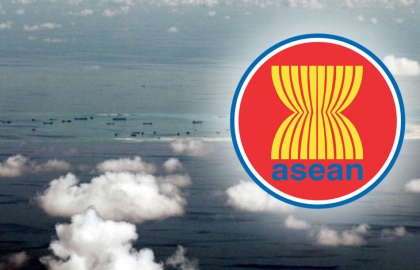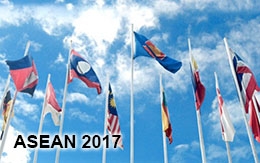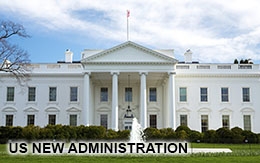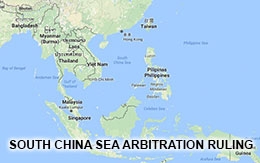The ASEAN’s Achilles Heel: Institutional Deficit and Leadership Vacuum Amid China’s South China Sea Aggression
ASEAN, long billed as the most successful model of regional integration in the post-colonial world, has become increasingly powerless in constraining Beijing’s emaciation of a regional rules-based order driven by principles of non-aggression, conflict-avoidance, and liberal multilateralism.

“The size of China’s displacement of the world balance is such that the world must find a new balance,” warned the late Singaporean leader Prime Minister Lee Kuan Yew. “It is not possible to pretend that this is just another big player. This is the biggest player in the history of the world.”
And it is in Southeast Asia, ancient China’s strategic depth, where the impact of this seismic geopolitical shift is most apparent. The intensification of the South China Sea disputes, which have entered a new era of calibrated confrontation, is the byproduct of Beijing’s efforts to establish an imperial perimeter of defense, expand the frontiers of its “blue soil” territories, and establish a neo-tributary order in East Asia.
As the German philosopher Walter Benjamin once observed, “Behind every fascism there is a failed revolution.” The ‘failed revolution’, which has allowed China to brazenly defy international law and make a mockery out of regional norms with utmost impunity, is the absence of a Kantian mechanism to safeguard ‘perpetual peace’ in the region.
The Association of Southeast Asian Nations (ASEAN), long billed as the most successful model of regional integration in the post-colonial world, has become increasingly powerless in constraining Beijing’s emaciation of a regional rules-based order driven by principles of non-aggression, conflict-avoidance, and liberal multilateralism.
The genesis of the crisis is two-fold. First is the ASEAN’s ‘middle institutional trap’, namely the failure to evolve and adopt its decision-making procedures to new geopolitical realities, as China adopts a brutal ‘divide and conquer’ formula in its peripheries. And second, a perilous ‘leadership vacuum’, with Southeast Asia’s most prominent leader, Philippine President Rodrigo Duterte, who heads the current ASEAN-China country coordinator, stubbornly perusing rapprochement with China at all cost instead of safeguarding the interest of smaller nations.
The Middle Institutional Trap
“An era can be considered over when its basic illusions have been exhausted,” the American playwright Arthur Miller once observed. The ASEAN is facing a similar moment of reckoning. For half-a-century, the regional body conscientiously beat all the odds by integrating the world’s most diverse region into a de facto ‘security community’.
Not long ago, Southeast Asia marked the geographical highpoint of Cold War, drenched in hardening ideological faultlines and violent superpower rivalries, which reduced much of Indo-China into ruins.
In archipelagic Southeast Asia, new post-colonial nations were seemingly trapped in a Hobbesian Konfrontasi, pitting Indonesia, Malaysia, Singapore and the Philippines against each other. It was a brutal contest for maximal territorial extent and strategic influence.
Today, however, the use or threat of war as a means of conflict-resolution among ASEAN member is virtually unthinkable. Even historically-rooted border disputes, whether in continental or archipelagic Southeast Asia, have now become a matter of international arbitration.
This is a remarkable feat for at least two reasons. First of all, the ASEAN lacks any credible mechanism such as the European Union’s Copenhagen criteria regime, to harmonize relations among (if not homogenize) member states.
Second, the ASEAN was built amid unprecedented diversity, home to one of the world’s largest (Indonesia) and smallest (Brunei) as well as richest (Singapore) and poorest (Myanmar) nations, which have extremely diverse religious (Islam, Christianly, Buddhism) backgrounds and political regimes (communist, liberal democratic, electoral autocratic, military junta, and absolute monarchy).
The ASEAN managed this progressive regional integration through the principle of musyawarah (consultation) and muafakat (consensus), the two pillars of the so-called “ASEAN way”. This inclusive decision-making process gave sufficient voice and confidence to a diverse grouping to come together under a single organizational umbrella.
The problem, however, is that this institutional arrangement is no longer fit for the current times, just like how policies that lift nations out of poverty can drive them into a ‘middle income trap’. The principle of de facto unanimity-based decision-making gives each member nation, regardless of type interest or degree responsibility, a veto power over the direction of the ASEAN’s response to most pressing strategic challenges, particularly the South China Sea disputes.
As the Singaporean diplomat Barry Desker warned, the upshot of this arrangement is the “ability of external parties to shape the positions of ASEAN members on regional issues,” which is most apparent when “China exerts its influence on ASEAN members to prevent any decisions which could affect its preference for bilateral negotiations” over a multilateral engagement with the ASEAN.
As a result of this ‘middle institutional trap’, since the ‘ASEAN way’ has not adopted to new geopolitical realities, the ASEAN has fallen into a state of institutional paralysis vis-à-vis the South China Sea disputes
Duterte’s Dangerous Gambit
The obvious way forward is adopting the “ASEAN Minus X” formula, where unanimity is not an excuse for inaction, and instituting qualified majority voting modality, which ensures that what prevails is the majority interest, especially of those with more direct stake and greater responsibility. So far, there has been little appetite for institutional evolution, thus the ASEAN’s ennui and entropy.
The impotence of the regional body has been blatantly on display amid China’s persistent aggression against smaller claimant states, ranging from harassing their fishermen to threatening their supply lines and energy exploration activities in the area. The situation is getting worse on a daily basis, as China coercively changes facts on the ground with minimal regard for the interest of smaller ASEAN nations.
In fact, China has now moved to the final phase of its bid for domination of the South China Sea, having almost completed the militarization of its reclaimed islands. We are now witnessing the dangerous ‘militiazation’ of the disputes, with Beijing deploying an armada of militia-cum-fishermen forces to swarm, surround and suffocate smaller claimant states’ vessels, personnel and territories in the area.
In absence of strong institutions, the ASEAN has two fallback options. One is the ‘minilateralism’ approach, whereby likeminded member states cooperate, on an ad-hoc basis, around issues of common concern. For instance, the Philippines, Malaysia, Vietnam, and Indonesia can cooperate on disputed management in the South China Sea in parallel to ASEAN multilateralism, which, so far, has produced minimal results.
The minilateral formula has been effectively implemented in the realm of counter-terrorism cooperation, especially following the siege of southern Philippine city of Marawi by Jihadist groups in 2017. So far, however, it has not been applied to the South China Sea disputes, despite the proposal for quadrilateral cooperation among the Philippines, Malaysia, Vietnam and Brunei.
The second fallback option is the presence of a personalized center of gravity, namely strong-willed regional leaders willing to stand up for ASEAN interest. The Malaysian Prime Minister Mahathir Mohamad could potentially play this role, having done so in the late-20th century along other regional strongmen. The problem, however, is that Mahathir is still focused on domestic political stabilization following a shocking electoral victory that precipitated regime change last year.
This leaves Philippine President Rodrigo Duterte as the most preeminent regional leader. Instead of standing up to Beijing like his predecessor, Benigno Aquino, who took the disputes to the international court, the current Filipino leader has instead weakened the ASEAN’s hands.
Duterte has accomplished this on three levels. First of all, as the ASEAN chain in 2017 and later head of the ASEAN-China country coordinator, he has effectively toed China’s line by calling on external powers, especially the United States and Japan, to keep out of the disputes.
Moreover, he has effectively ignored and undermined the 2016 arbitral tribunal ruling at The Hague, which nullified much of China’s expansive ‘nine-dashed-line’ claim in the South China Sea. The arbitration award could have served as a primary platform for a just and lawful management of the South China Sea disputes, protecting the interest of smaller ASEAN claimant states.
Third, and most dangerously, Duterte is effectively legitimizing Beijing’s expansionist claims in the area by green-lighting entry of Chinese fishing vessel into Philippine Exclusive Economic Zone as well as joint development agreements in energy-rich Reed Bank. In effect, Duterte is legitimizing the nine-dashed-line. No wonder then, China views Duterte as its ‘most important friend’. In short, the Filipino president is accentuating the ASEAN’s weaknesses and vulnerabilities on the South China Sea issue.
Moving forward, the ASEAN, short of institutional reforms, should, at the very least, embrace minilateralism under a more robust leadership. With Mahathir signaling his aim to extend his stay in power, the Malaysian maverick can perhaps provide that much-needed leadership next year after gradually stabilizing his political foundation at home. For now, however, the ASEAN will most likely continue its fast fade into irrelevance.
The author is an academic, columnist, and policy adviser. He is currently a Fellow at National Chengchi University (Taiwan), and has taught, as a political science assistant professor, at De La Salle University and Ateneo De Manila University/ His latest book are “The Rise of Duterte: A Populist Revolt against Elite Democracy” (Palgrave), and author of forthcoming “The Indo-Pacifc: Trump, China, and the New Struggle for Global Mastery” (Palgrave). He is a regular contributor to the Council on Foreign Relations (CFR) and Center for Strategic and International Studies (CSIS) in Washington DC, and has written for or/and interviewed by Aljazeera, BBC, Bloomberg, CNN, The New York Times, The Washington Post, The Guardian, The Wall Street Journal, Foreign Affairs, Foreign Policy, The Economist, among other leading global publications.
Click here for pdf file.










